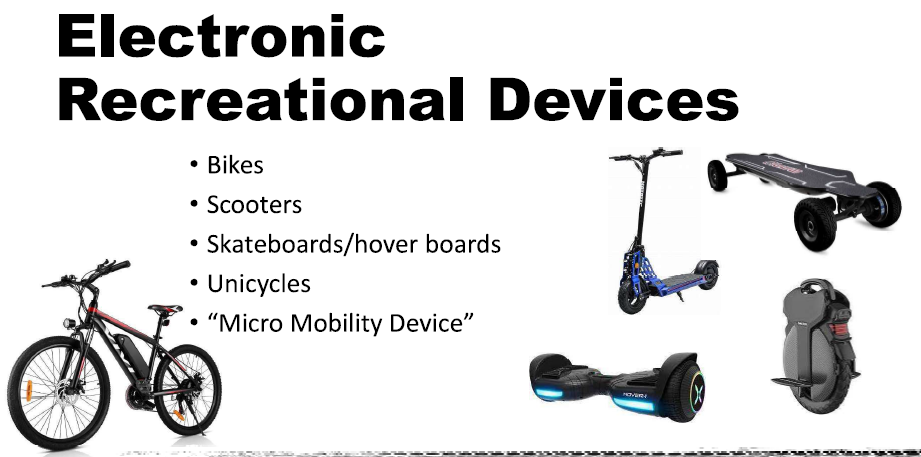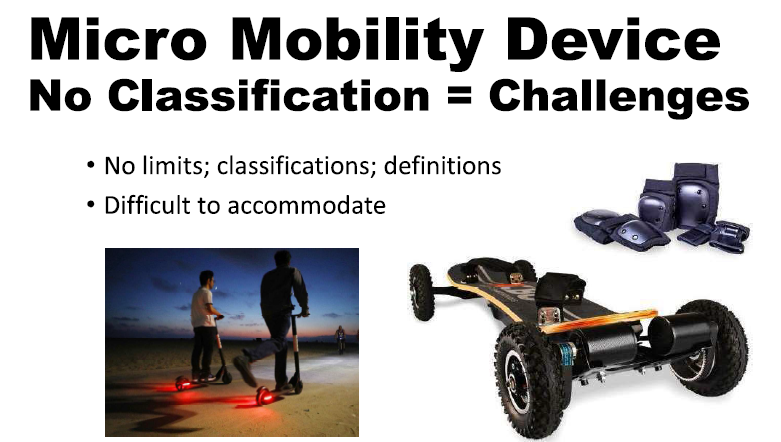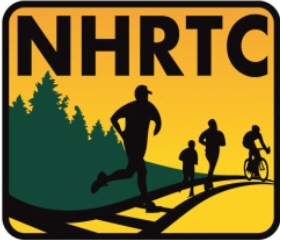
Starting last August, NH Rail Trails Coalition and the Bike-Walk Alliance of NH worked on NH HB-1543 to address high-speed and high-power “Personal Electric Vehicles” (PEVs), also called “Micro Mobility Devices.” One category is the “electric motorcycle with pedals” being sold and used on both rail trails and public roads as if they were an actual e-bike. We always have issues with “trail etiquette” concerning conventional bike riders and even walkers on rail trails, but when devices capable of 40-60 MPH are being used the problems escalate drastically. There is no comparison between a “true” e-bike with a maximum powered speed of 20 MPH assisted by a motor not exceeding one HP (750 watts) and the “electric motorcycles” with 16 HP (12,000 watt) motors, maybe greater.

Now we have other PEVs like fast and powerful electric skate boards, scooters, “One Wheels” and electric unicycles (EUCs), all with capabilities and specs far exceeding the e-bike limits. Some can navigate very well off-road on rough terrain, never mind on rail trails with a stone dust surface. HB-1543 started to address these issues on the premise that these “Out-of-Class Electric Vehicles” (OCEVs) should be considered “motor vehicles” and regulated as such.
Meanwhile, unbeknownst to us, a second PEV bill, HB-1445, was introduced by a lone State Representative that basically would have banned all true e-bikes on rail trails and require them to be registered. NHRTC and BWANH pushed against this bill and with a lot of support from rail trail groups, “roadies” and e-bike dealers the bill died in committee.
The whole situation is very complicated as we are looking at state agency involvement, education, and enforcement. As we acknowledge that PEVs, even the fast and powerful devices, have their place in a modern society desiring economical and non-polluting transportation options, it is a matter of where and how they are used. There is nothing wrong with a car capable of 140 MPH being driven at 65 MPH on an Interstate highway.
Bottom line, both HB-1445 and “our” HB-1543 were voted “Inexpedient to Legislate” (ITL’d = killed) by the House Transportation Committee. The committee chair agreed there is a need for legislation and suggested an updated bill be filed for the next session that starts in September 2024.
Subsequent to the above legislative hearings, BWANH and NHRTC conducted an open Zoom Q&A session to present details and pro / con positions on PEVs in general. The two ITL’d bills and the Q&A session were picked up by PEV user groups on YouTube videos and viewed around the country. That resulted in a productive hybrid Zoom meeting in February with leaders of many PEV user groups representing NH, ME, VT, MA, RI, NY, NV, CO and CA. This was the first such meeting known to welcome “PEV players” from multiple states and across the country. The quick take-away was that everyone felt regulations are coming, we have a “Wild West” environment today, and if PEV users are recognized as being “legitimate” operators with regulations most current issues will be resolved.
The next steps toward NH legislation for 2025 are planned meetings with the national PEV user groups, local bike-ped / rail trail advocates, NH State Reps and Senators, our NH state agencies plus the AAA. These meetings will commence in April with a draft “Legislative Service Request” (LSR) starting a new bill to be introduced in August. By working together and understanding the PEV technology, user needs, safety concerns of all and the environment, we should be able to draft some model legislation that has support across the whole spectrum. And by the way, just using these PEVs can be a lot of fun and gives the users freedom not possible in an expensive two-ton car.
Stay tuned as were move ahead with new PEV legislation. These devices are here today and growing in popularity. If you haven’t seen the EUCs and “electric motorcycles with pedals” as yet, you will pretty soon!
update by NHRTC President, Dave Topham
For more information about PEVs – check out American Trails’ informative webinar: “The Third Mode Bonus Chapters: Progress in Walking, Bicycling, and Micromobility for Transportation.”
